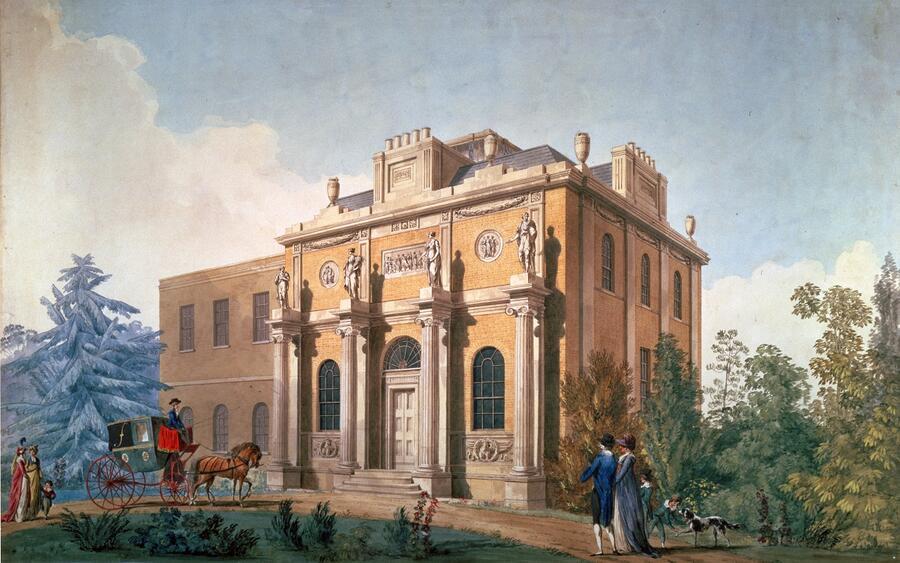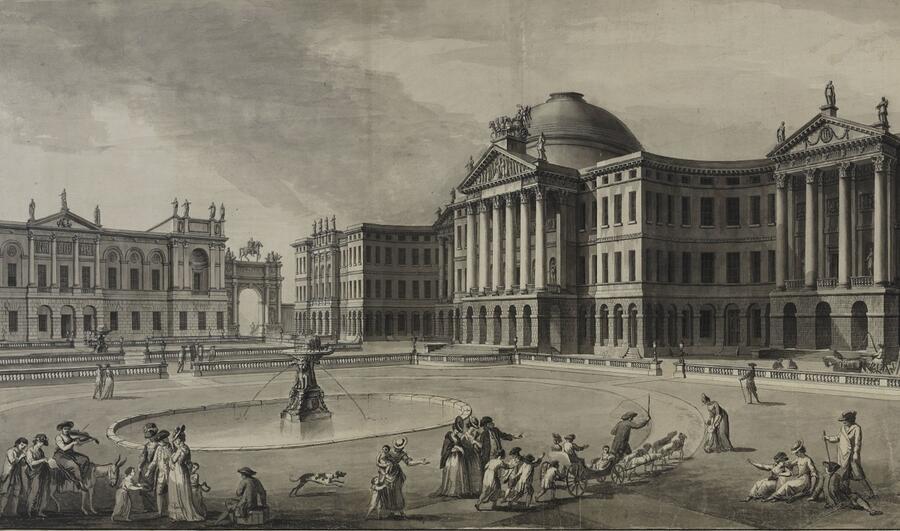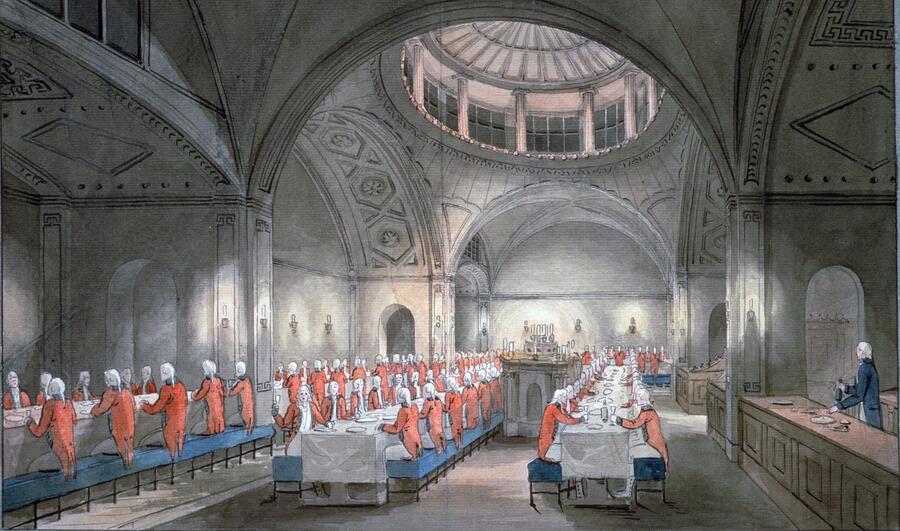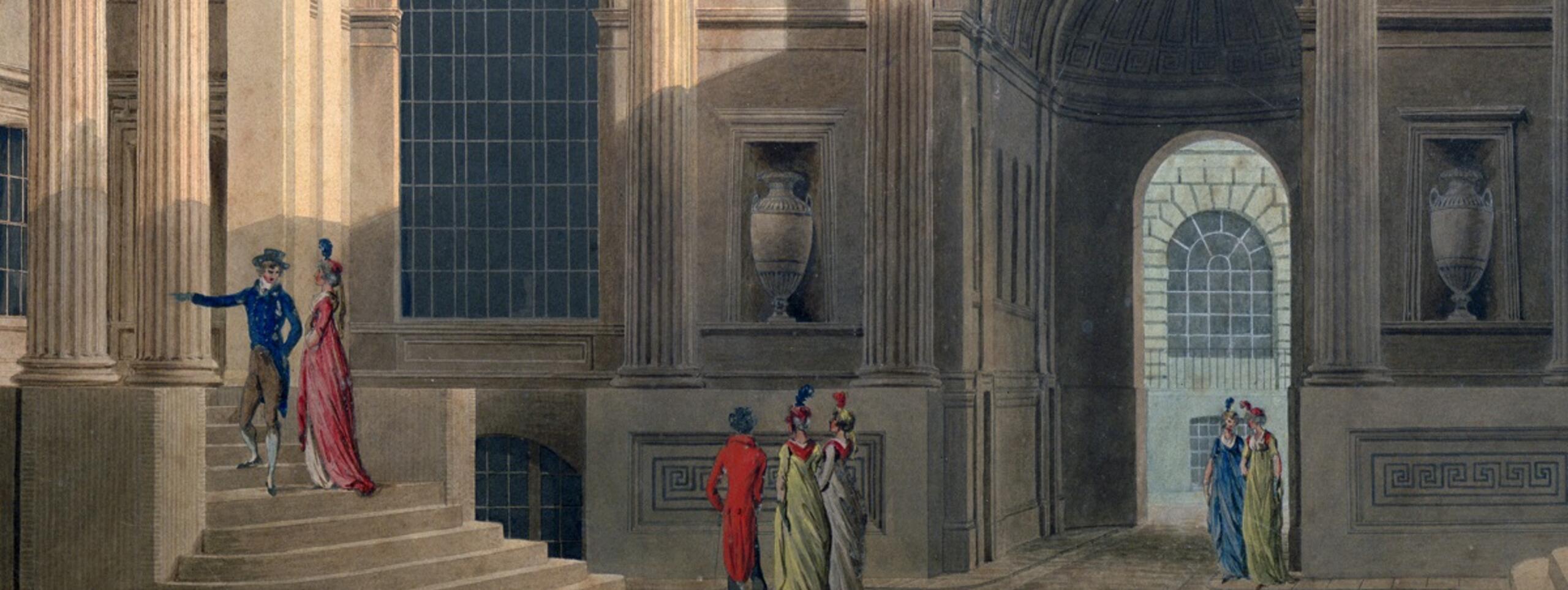A specially commissioned film, on display in the Museum's Foyle Space, explores the representation of figures and communities in contemporary architectural drawing, illustrating the roles that these figures play in reflecting the values, priorities and aspirations of architects and their projects. The film discusses this subject with four prominent architectural practices: Nimtim, Muf, Office S&M and OMMX. At the cutting edge of their field, these architects question who is represented in architectural designs and what the impact of this representation of our shared spaces has on how we live. You can watch the full film below.
Fanciful Figures turns visitors’ attention to ‘staffage’, the small human and animal figures in architectural drawings, which became increasingly popular during the eighteenth century.
Drawing on the drafting practices of past and present, the exhibition illustrates staffage’s ability to animate architects’ visions, both for built projects and unrealised designs.
The Georgians placed these figures, whether beautifully dressed, sociable or industrious, into their drawings to animate, add intrigue and enhance the aspirational appeal of their designs. They also played, and continue to play, an important role in indicating the scale and function of architectural elements and drawing attention to the special features of designs.
Just as architects today use staffage to help prospective buyers imagine a life in and around new developments, these historic scenes were created to market new possibilities to audiences. They have, therefore, taken on a new significance as a means of signalling shifts in style, demographics, work, and culture. Between the city traders and happy families, street-side boxing matches and children riding in dog-carts, the figures celebrated in this exhibition help piece together a vibrant picture.
What will you see when you visit?
The exhibition draws largely from the Museum’s own collection, including a very early instance of staffage by figure artist Leonard Knyff from 1695. This is shown alongside works by Soane’s favourite draughtsman Joseph Gandy and a series of never-before-seen prints by Benedict Van Assen, both pioneers in this practice.

As you move around the Museum, you will notice 'Dummy Boards' positioned to direct you towards the Exhibition Galleries. These figures, sprung from the page, were a popular but now forgotten part of historic interiors. Learn more about their history with this specially curated photo essay.
Curious to learn more but unlikely to make it to the Museum in time to see Fanciful Figures? Exhibition curator Frances Sands has recored a lecture, introducing the subject of staffage and sharing some of the highlights from the exhibition.
For younger visitors
Discover the lost worlds of these remarkable little characters through specially created short stories and soundscapes inspired by the works featured in the exhibition. Click on the buttons below to read and listen as you explore our gallery, and enjoy an adventure into the past!

Exhibition events
Delve deeper into the history of people in architectural drawings by joining us for a special visit, panel discussion, family workshop or exhibition tour.
3 April In Focus: A View from the Streets of Georgian London (Antonio Van Assen's The Busy World or London dissected, 1793); £5, 1pm, book
3 April Visit the Soane's drawings archive with the exhibition's curator; £5, 11am and 2.30pm tours, book
10 April Miniature figures holiday workshop, suitable for ages 7 to 11; £6, 11am to 3pm, book
20 April Curator-led tour of Fanciful Figures; free (booking essential), 3pm, book
8 May Visit the Soane's drawings archive with the exhibition's curator; £5, 11am and 2pm tours, book
21 May Fanciful Figures in contemporary architecture, with nimtim architects and OMMX; free to attend, online via Zoom, register
25 May Curator-led tour of Fanciful Figures; free (booking essential), 3pm, book
30 May Georgian Silhoutettes Family Drop-In Workshop, free, 11am, details

